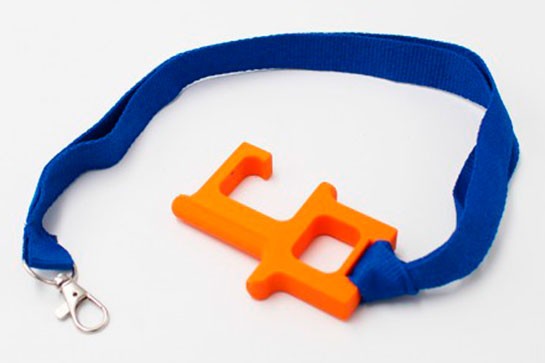
Given the current emergency situation that is being experienced due to the spread of the COVID-19 coronavirus, great initiatives and solutions are emerging from solidarity and innovation, especially to alleviate the shortage of medical equipment and personal protective equipment (PPE).
From the 3D printing sector, there are many engineers and manufacturers of materials that, together with medical specialists, work to design models of PPE (personal protective equipment) that help preserve the health of toilets and facilitate their work, thus as in the development of different prototypes such as valves, connectors of respirators or assisted respirators and other devices that help mitigate the shortage of medical equipment.
In addition, many communities of makers have launched their 3D printers to manufacture these devices. In Spain, the Coronavirus Makers initiative has emerged, a non-profit platform with thousands of volunteers. Similar initiatives can be found in countries such as Germany, Italy, Chile, Argentina or Colombia.
Below we compile various designs of protective equipment and medical supplies that have been made available to the public free of charge by different companies and associations, and can be downloaded in STL format and printed on practically any FDM printer.
It should be borne in mind that some of the models are not homologated or approved by the corresponding health authorities and that, depending on each area or country, the manufacturing requirements to achieve this homologation may vary.
Face masks
Both in 3D printing resource platforms and in various pages of companies in the 3D sector, different mask models are being shared for 3D printing on any type of 3D FDM printer.
It should be emphasized that these masks, except that they have the necessary filters, only serve as a physical barrier against the virus, in addition to helping not to spread it in the event of being infected.
A few days ago we shared the design of the Nanohack mask developed by the Copper3D team and who recently shared the update of the design of said mask: NanoHack 2.0, with a monoblock structure, strong and hermetic, which must be manufactured with PLActive and MDFlex antibacterial filaments to provide maximum protection against the external environment.
PLActive is a recyclable and biocompatible polymer that contains a copper nanocomposite that has shown antimicrobial properties.
Thanks to its design, NanoHack 2.0 is a device that offers protection against particles in the air and prevents the spread of liquids that contaminate the airways. NanoHack uses the same material used in surgical masks (non-woven polypropylene) as a filtration system. For optimum protection, it's recommended to use a triple layer nonwoven polypropylene filter. This filter is embedded in the mask. Thus, according to various studies, a filtration efficiency of 96.4 % is achieved for microorganisms of 1 micron and 89.5 % for microorganisms of 0.02 microns.
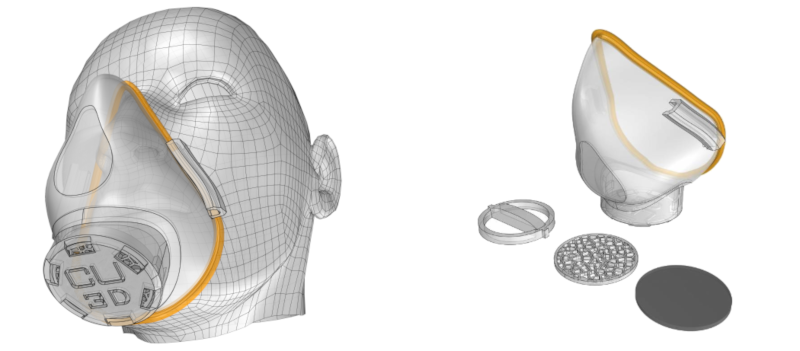
Face shields
You can find countless models of visors and face shields on the internet. Prusa has developed several prototypes, which have been verified with the Czech Ministry of Health. Finally, they have presented two screen versions: RC1 and RC2.
 This screen design consists of a rigid structure with a flexible and transparent acetate plastic sheet. The rigid structure is 3D printed and the plastic acetate sheet is then adapted as a screen. The RC1 version allows more parts to be printed in the same printing process, while the RC2 version provides slightly higher protection and is more comfortable to wear.
This screen design consists of a rigid structure with a flexible and transparent acetate plastic sheet. The rigid structure is 3D printed and the plastic acetate sheet is then adapted as a screen. The RC1 version allows more parts to be printed in the same printing process, while the RC2 version provides slightly higher protection and is more comfortable to wear.
As a screen, the prototype uses a 0.5mm thick PETG sheet, although other transparent and flexible materials with a similar thickness can be used such as clear acetate sheets.

3D printing with PETG with 30 % fill is recommended, although other materials such as PLA or ABS can be used. In order to deliver them to health centers, it's essential to sterilize them by applying a water bath with bleach (Ratio 50: 1) and then rinse them with water. In this way, they will not carry the risk of possible indirect transmissions for healthcare personnel.
Respirators and valves
Given the shortage of self-contained respirators, several groups of engineers, in collaboration with different institutions and healthcare personnel, are developing prototypes and manufacturing the different parts that compose them using 3D printing.
This is the case of the Barcelona Free Trade Zone Consortium that, together with HP, Leitat, and SEAT, have developed a prototype of a respirator using 3D printing to manufacture its parts and taking advantage of elements such as a car's windshield wiper motor. This device has been named OxyGEN and has already been validated by experts from the Parc Taulí hospital in Sabadell. One of the advantages of this device is that its production is scalable.
Another possible solution that arises is to use adapters that allow the same respirator to be used for several patients, such as the “H” connector that Copper3D has developed. A design that minimizes dead space volume and prevents possible air leakage due to unnecessary connections. Copper 3D recommends 3D printing of this device using PLActive, for its antibacterial properties and biocompatibility.
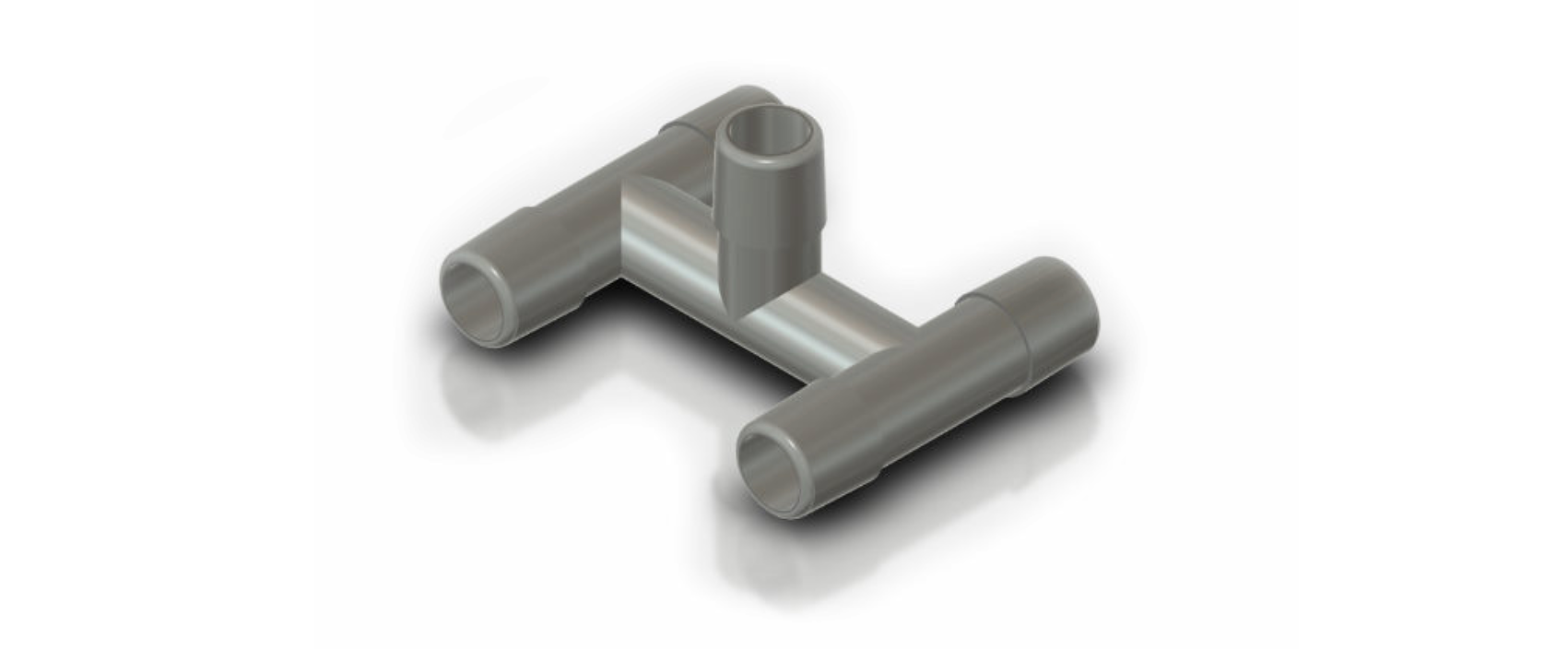
In several hospitals there is a lack of some important elements related to respirators and necessary when treating a patient with respiratory complications. This is the case of the Venturi valve, used to regulate the oxygen concentration that is introduced to the patient through the respirator.
There are several designs available to users, such as this one from the Cults platform.

Other devices
In addition to PPE and specific devices for the treatment of patients affected by COVID-19, different tools are being developed to avoid the contagion by indirect contact to which anyone is exposed in their daily activity (door and window handles, buttons for elevators, etc.).
The StopCovid-19 ring is an easy to print ring, designed to press switches and buttons without physically touching them.
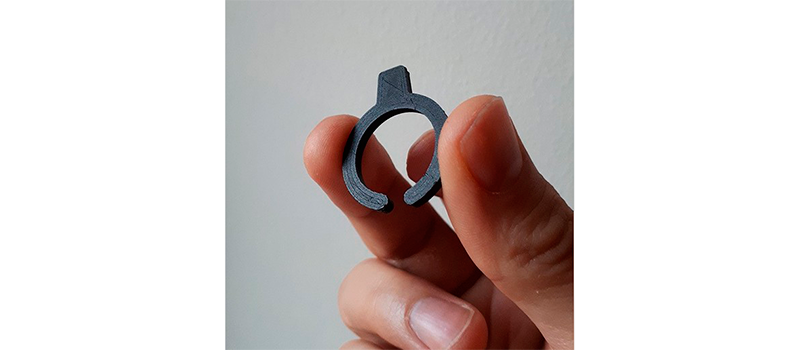
Companies like Materialise have developed a device for attaching to door handles, so that they can be opened without using your hands. Different versions of this tool, adapted to different handle formats (cylindrical, rectangular, circular, etc.) can be downloaded free of charge from its website.

Combining the usefulness of the previous two, there is LU-Touch: A tool for opening and closing doors and windows, and at the same time a push-button for buttons and switches. LU-Touch can be downloaded for free and printed on any 3D FDM printer. In addition, if you do not have a 3D printer, it can be purchased already printed.

Thanks to the use of these tools, it's possible to minimize the possibility of contagion due to indirect contacts in daily activity. For greater safety, it's necessary to disinfect the tools always after use. It should also be remembered that the use of this type of tool does not exempt from applying the recommended safety rules: wash your hands regularly, do not touch your face, etc.
Specific materials
Among the specific materials to manufacture personal protective equipment, we highlight PLActive and MDFlex for their antimicrobial and antiviral qualities. This material is also recommended for printing expansion devices and valves adapted to self-contained respirators.
Common materials
For the manufacture of screens or valves that, due to their use, do not need to be composed of biocompatible or antibacterial materials, basic materials can be used in 3D FDM printing, such as PLA or PETG; since these elements do not require specific properties, although it's true that they require some rigidity and it's not recommended to use flexible materials such as Flexfill or FilaFlex.
With these free download files, any user with a FDM 3D printer and any of the aforementioned materials can contribute their bit to help stop the pandemic and the alarming situation we are currently experiencing.

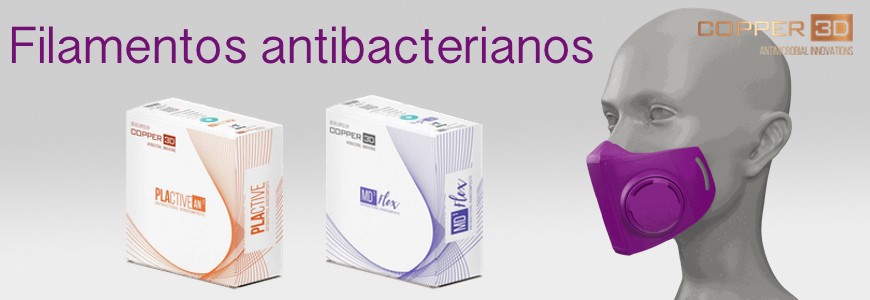












Quisiera comprar la mascarilla con filtro de cobre. Dónde puedo hacerlo ?
Necesitas varias Cuanto dura su efectividad Lavable Cuanto vale en Pesos chileno Se los envían
Bonjour, Depuis une semaine j'imprime 7J/7 des visières qui sont offertes aux personnels soignants et autres personnes exposés (CF site covid3D.fr Je serai bientôt à cours de filament... Quel est votre délai de livraison SVP (LYON, France). Merci.